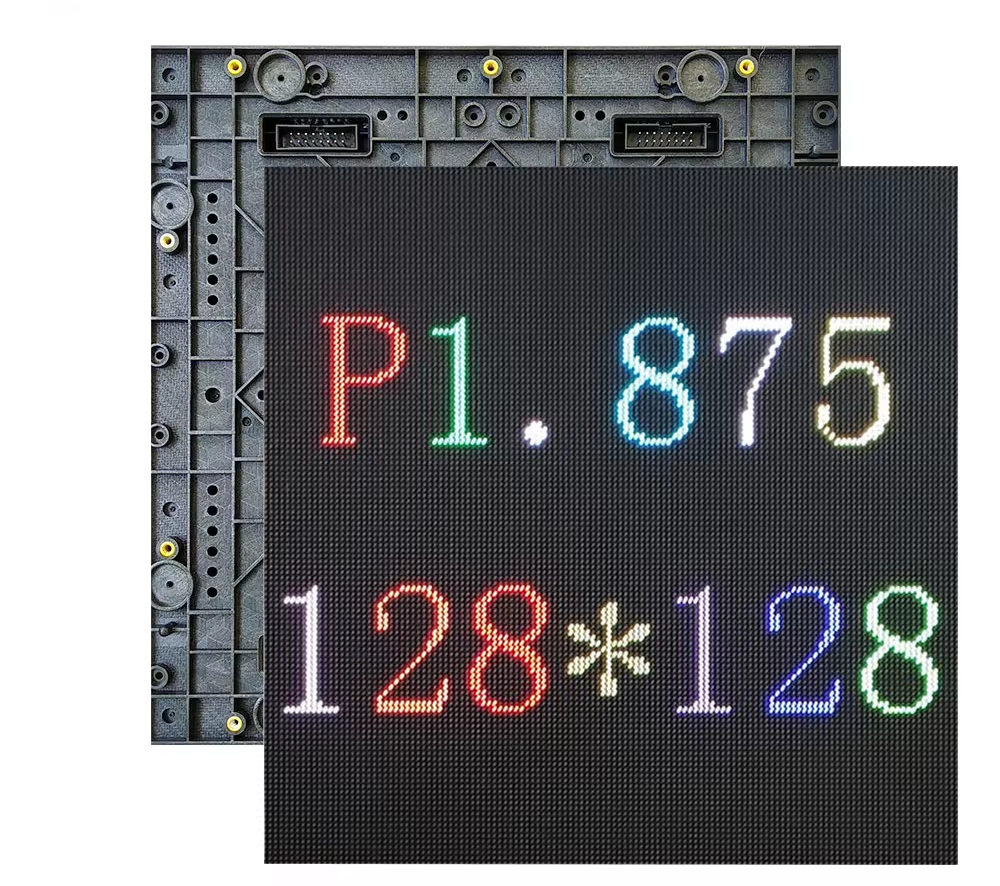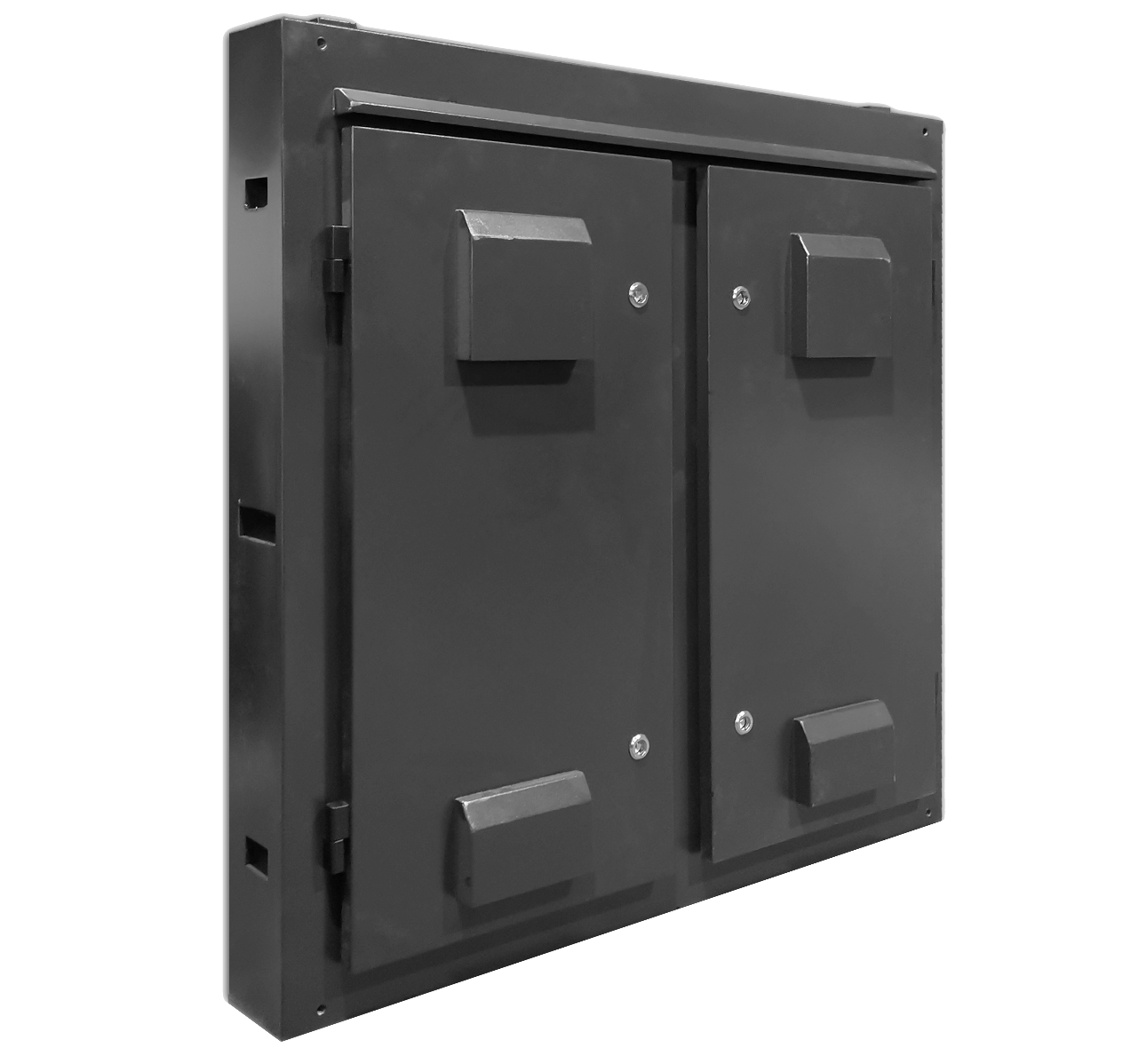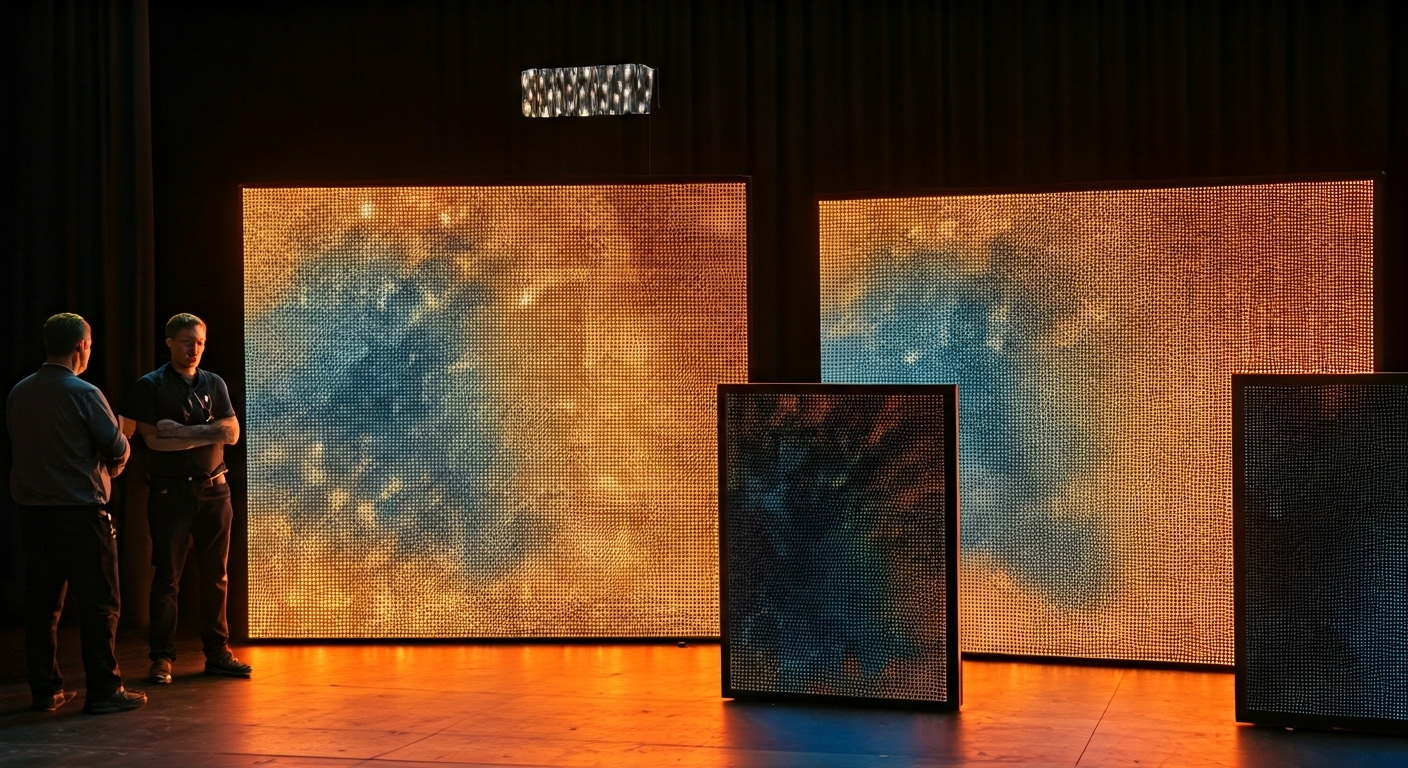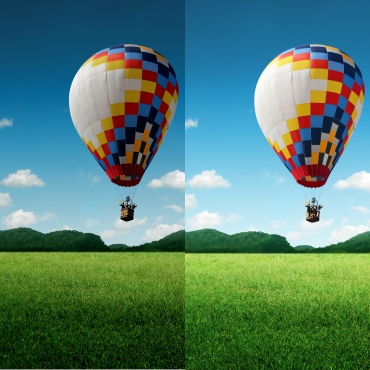Introducción
Selecting an LED screen cabinet for events involves more than just picking a display screen—it’s about matching the cabinet’s features to your installation environment and usage needs.
Whether for indoor use in conference halls or large outdoor venues, factors like pixel pitch and structural material are decisive.
A well-chosen cabinet enhances image clarity, simplifies installation, and ensures durability, making your LED screen a reliable centerpiece for any occasion. Let’s explore what makes the perfect cabinet for your next event.
Components of an LED Screen Cabinet
Every LED screen cabinet is a carefully engineered enclosure designed to house the vital internal components needed for superior screen display. This includes LED modules, power supply units, receiving cards, hub boards, cables, and connectors—each playing an indispensable role.
These display cabinets are the backbone of both standalone and modular LED video walls, offering protection, organized layout, and ease of maintenance. Understanding these internal components helps you appreciate how a cabinet optimizes the performance, stability, and scalability of your LED display.
Can you explain the difference between LED display modules and LED screen cabinets?
LED display modules are the individual panels containing LEDs, responsible for producing visuals. LED screen cabinets, meanwhile, are the structural frames that house these modules along with other electronics like power supplies and receiving cards, providing protection and modularity.
1. LED Cabinet Structure
The LED cabinet serves as the central framework for your display screen, offering both support and protection for sensitive electronics.
Unlike a simple box, this modular design is engineered to facilitate smooth assembly and scalability, making it easy to expand or reconfigure your video wall for different event spaces. Robust cabinet construction ensures the screen remains flat and seamlessly aligned, crucial for maintaining high-definition visuals without distortions.
In events where rapid setup is needed, a well-designed cabinet structure streamlines installation and transportation. Integrated locking systems and standardized shapes allow quick connections between cabinets, minimizing labor. The modular design also simplifies future upgrades or repairs, letting you swap out individual cabinets if needed.
These features make the LED cabinet not just an enclosure, but a foundation for flexibility, durability, and aesthetic consistency in every LED display screen installation.

2. Power Supply
Power supplies within a LED display cabinet are responsible for converting and distributing electrical power safely to all internal components.
The power box usually operates at low output voltages (such as 5V/60A or 5V/40A) with high current ratings, ensuring the entire LED display runs efficiently and reliably. Popular models from brands like Meanwell, G-energy, and CZCL are commonly used for their stability and performance.
Efficient power management is vital in maintaining consistent brightness and color accuracy across your entire display screen. Any drop or fluctuation in electricity can lead to uneven lighting, flickering, or even damage. By choosing high-quality power supplies, you safeguard your investment and guarantee smooth operation during critical events.
Additionally, streamlined power box placement and smart cabling simplify maintenance and replacement, minimizing downtime during busy event schedules. The right power supply is thus a cornerstone for robust, uninterrupted LED display performance.
3. LED Screen Modules
módulos LED are the heart of any LED display screen, delivering the vibrant colors and sharp visuals audiences expect. Every module consists of an array of LEDs grouped together, and their pixel pitch—the distance between each LED—directly impacts display sharpness and resolution.

Modern modules come in various types, including SMD, DIP, GOB, and COB, each suited for different lighting and durability needs.
The choice of pixel pitch is crucial: smaller pitches (like P2.5 or P1.5) create higher-definition images for close-up viewing, while larger pitches (P8, P10) are ideal for larger spaces where detail isn’t as critical. This flexibility allows you to tailor your screen display to the event type and audience size.
High-quality LED modules also support modular design, making maintenance and upgrades easy. A faulty module can be replaced without disturbing the entire cabinet, ensuring your video walls are always ready for action.
4. Receiving Card
The receiving card acts as the control center of each LED cabinet, translating data from the sending card into signals that drive the display’s visuals.
Major brands like Novastar, Colorlight, Linsn, and HUIDU supply receiving cards with varying sizes and features, ensuring compatibility whether you’re building compact screens or expansive video walls.
This component is vital for syncing video input with output, preventing lag, flicker, or data loss during high-profile events. A robust receiving card supports seamless transitions and dynamic content changes, enhancing the audience experience across the entire LED display.
Flexibility in receiving card selection allows you to optimize for your specific event needs—choose larger models for bigger cabinets and smaller cards for lightweight portable displays. By investing in quality receiving cards, you ensure reliable performance, smooth operation, and easy troubleshooting for your LED screen.
5. Hub Board
Hub boards, often referred to as adapter boards, are critical for bridging the signals between the receiving card and the LED modules within the cabinet.
They convert complex electronic instructions into a format that LED modules can read and display, ensuring your visuals render accurately and efficiently on the display screen.
In rental LED screen cabinets, hub boards support fast installation and simplified connections, key for events with tight timelines. Their modular design means you can quickly swap out a hub board if a fault occurs, reducing downtime and keeping your video walls running smoothly.
The hub board also contributes to power management, connecting directly to the power box to ensure consistent voltage delivery. This dual role supports both signal clarity and safe operation, making the hub board a valuable asset in professional LED display setups.
6. Cables
A network of specialized cables ties together every element of the LED display cabinet, supporting both data transfer and power delivery. You’ll find module power cables supplying electricity to LED modules, RJ45 network cables facilitating communication between receiving and sending cards, and AC power connection cables linking the power supply to the cabinet.
Careful organization of these cables within display cabinets prevents signal interference and ensures easy maintenance. Well-marked, accessible cabling simplifies troubleshooting and replacements during time-sensitive events, while robust connectors provide reliable, secure connections.
For larger video walls, cable management becomes even more crucial—proper routing and shielding help maintain signal quality across all cabinets. Investing in quality cables and planning their layout ensures your LED display screen will operate smoothly, reducing the risk of outages or degraded visuals.
7. Connectors
Connectors are the unsung heroes of modular screen cabinets, creating secure links between LED modules, power supplies, and other internal components. Power aviation connectors handle high-voltage connections safely, while data aviation connectors facilitate fast, reliable data exchange between cabinets.
Efficient connector design enables quick assembly and disassembly of video walls, crucial for events requiring fast installation. They also help maintain seamless visuals, preventing gaps or misalignment between display cabinets during setup.
By choosing durable connectors, you reduce the chance of signal loss or physical damage during transportation and frequent use. This reliability is particularly valuable in rental applications, where cabinets are moved and reassembled regularly. The right connectors not only enhance operational efficiency but also extend the lifespan of your entire LED screen setup.
Classified By Material
Material selection is central to the durability and usability of your LED cabinet. Different materials—iron, die-cast aluminum, carbon fiber, and magnesium alloy—offer unique strengths in terms of weight, structural integrity, and ease of installation.
High-strength, durable designs are essential for both permanent and portable display cabinets, especially when frequent transport or harsh environments are involved.
Understanding these options gives you the flexibility to match cabinet material to your specific display screen needs.
What materials are commonly used in LED screen cabinet construction, and how do they impact durability and weight?
Iron cabinets provide high strength but are heavy; die-cast aluminum is lightweight and precise; carbon fiber offers ultra-light weight with top durability; magnesium alloy combines lightness with excellent heat dissipation. The material directly affects portability, installation, and long-term resilience.
1. Iron Cabinets
Iron cabinets are a mainstay in LED display screen installations, prized for their structural strength and cost-effectiveness. Their adaptability allows for custom sizing, making them suitable for various screen displays in fixed locations, especially where rigid support is essential.

Despite their robust design, iron cabinets come with trade-offs. Their significant weight often complicates transportation and installation, requiring more manpower and equipment. Additionally, even with protective coatings, iron is vulnerable to rust and corrosion in outdoor environments, which can affect longevity and visual integrity.
One advantage is their original price—iron cabinets are generally more affordable than other options, offering budget-friendly solutions for projects where weight is not a critical concern. However, limited precision in joins may result in visible seams, which could affect the seamlessness of your video walls.
2. Die-Cast Aluminum Cabinets
Die-cast aluminum cabinets are highly valued for their lightweight construction and superior precision. These display cabinets excel in rental and event scenarios, where easy installation and transport are necessary.

Their low density means less strain during setup, and their engineered flatness guarantees a gap-free screen display.
The corrosion-resistant properties of die-cast aluminum make these cabinets well-suited for outdoor installations, ensuring your LED screen resists weathering and maintains performance over time. Seamless splicing and modular design enhance the overall aesthetic and viewing angle of your display.
While these lightweight materials command a higher current price compared to iron, they offer long-term savings through reduced labor and maintenance costs.
The tradeoff is susceptibility to dents under heavy impact and occasional need for enhanced cooling in high-temperature environments.
3. Carbon Fiber Cabinets
Carbon fiber cabinets represent the pinnacle of lightweight design and high strength in LED screen technology. Their ultra-thin profile makes them ideal for large-format installations where every pound counts, such as stadiums or outdoor advertising displays.
Despite their featherlight build, carbon fiber cabinets boast a high strength-to-weight ratio, providing reliable support without the bulk of traditional materials.
Their modular design allows for creative configurations, including curved or angled screen displays, enhancing both flexibility and visual appeal.
However, the advanced engineering involved means these cabinets come at a high price. Limited production also affects availability, so sourcing for large events may require advanced planning.
For spaces demanding premium aesthetics and minimal installation effort, carbon fiber cabinets are an excellent choice.
4. Magnesium Alloy Cabinets
Magnesium alloy cabinets offer an attractive balance between lightweight construction and rugged durability. Lighter even than aluminum, these display cabinets are easy to move, making them perfect for various installation locations and frequent event rotations.
The high strength of magnesium alloy ensures resilience against impacts, while its excellent heat dissipation properties protect internal components from low temperatures and overheating. This results in longer cabinet lifespans and more reliable LED display screen performance, especially for outdoor use.
Despite these advantages, magnesium alloy cabinets carry a higher price point and may be less suitable for extreme conditions compared to steel.
Resource availability can also vary, necessitating careful procurement planning for large-scale video walls. Their versatility and structural integrity, though, make them popular for high-end applications.

Main Types of LED Screen Cabinets
There are two principal types of LED screen cabinets: fixed installation cabinets and rental or portable options. Fixed cabinets are designed for permanent screen displays with rear maintenance access, ideal for indoor use and locations where stability is key.
Rental cabinets, on the other hand, prioritize easy installation and rapid setup for events, allowing for flexible screen display arrangements.
What are the main types of LED screen cabinets and how do I choose the right one for my needs?
Choose fixed installation cabinets for permanent indoor or outdoor displays needing structural support. Opt for rental cabinets for events demanding portability, fast installation, and frequent reconfiguration.
Fixed Installation Cabinets
Fixed installation cabinets are engineered for long-term placement, providing robust support for indoor LED display projects such as conference rooms, retail environments, and control centers.
These rear maintenance cabinets allow technicians to access internal components from the rear side, which is convenient when there’s ample space behind the display.
Designed for stability, fixed cabinets use durable materials like iron or aluminum, ensuring the display screen remains reliably mounted over years of use.
This approach minimizes the risk of accidental dislodgement or damage during daily operation.
While initial setup may be more involved, fixed cabinets offer superior protection for internal components and support larger screen displays with seamless alignment. Their maintenance model is often more cost-effective, as rear access allows for easy repairs without disturbing the front display surface.
Rental and Portable Cabinets
Rental cabinets are tailored for events that require quick installation, easy transport, and flexibility. Their lightweight materials and modular design simplify assembly and disassembly, making them ideal for corporate events, concerts, exhibitions, and outdoor use.
Fast installation features—like snap-fit locks and pre-marked connectors—help event teams set up video walls under tight schedules. These display cabinets support repeated handling and movement without compromising structural integrity or visual quality.
However, rental cabinets may sacrifice some long-term durability for portability, with internal components more vulnerable to impacts and wear.
Careful maintenance and regular checks are vital to avoid performance issues. When you need a dynamic screen display for single-day or multi-day events, rental cabinets provide the right balance of speed and reliability.
Choosing by Application: Indoor vs Outdoor LED Cabinets
The application environment greatly influences the choice of LED cabinet. Indoor use prioritizes lightweight construction, fine pixel pitch, and modular design for easy adaptation to changing room layouts.
Outdoor use demands high strength, weather-resistant materials, and features like front maintenance for accessibility in challenging conditions. Screen cabinets must match the event’s location and anticipated wear.
What features should I look for in an LED screen cabinet for outdoor versus indoor installations?
Indoor cabinets need fine pixel pitch and flexible modularity. Outdoor cabinets require robust materials, superior weatherproofing, and maintenance access suited to the installation constraints.
Key Features for Indoor Event Installations
When planning an indoor LED display, focus on features that deliver sharp visuals and seamless integration with the event space. Indoor LED display cabinets are designed for:
- Fine mm pixel pitch, ensuring crisp images even at close viewing distances.
- Wide viewing angle to accommodate audiences throughout the room.
- Modular design for flexible layouts and easy upgrades.
- Lightweight materials for effortless transport and installation.
- Quiet operation, minimizing noise from cooling fans.
Modular design allows quick adaptation to different venues, while precise pixel pitch enhances detail for presentations or performances. Lightweight construction simplifies setup, making these cabinets ideal for events needing frequent reconfiguration—like trade shows or rotating exhibits.
Choosing cabinets with front maintenance options makes servicing easier when displays are mounted against walls, reducing disruption during repairs.
Essential Qualities for Outdoor Event Use
Outdoor LED cabinets must withstand harsh conditions and deliver reliable performance. Look for these essential qualities:
- High strength materials for structural integrity in exposed locations.
- Weatherproofing to resist moisture, dust, and UV exposure.
- Effective heat dissipation for operation in low and high temperatures.
- Front maintenance access for easy servicing when rear access is unavailable.
- Secure locking mechanisms to prevent accidental disassembly.
Durability is paramount—cabinet material and sealing must hold up against rain, wind, and temperature extremes. Front maintenance features simplify upkeep in tight or wall-mounted installations, cutting downtime during large outdoor events.
Superior thermal management, combined with robust locking and mounting options, ensures your outdoor display screen remains safe and functional throughout the event, regardless of climate or foot traffic.
Pixel Pitch and Cabinet Size Considerations

Selecting the right pixel pitch and cabinet size is vital for achieving the desired image quality and visibility of your LED display screen.
Smaller pixel pitch means higher resolution and clarity, especially for close viewing, while larger cabinets cover more area with fewer seams. Balancing these factors ensures your video walls match both audience expectations and installation logistics.
How does the pixel pitch and cabinet size affect the performance and image quality of an LED screen?
Smaller pixel pitch enhances image quality for short viewing distances, while cabinet size impacts seamlessness and overall alignment in large installations.
Pixel Pitch Explained: Image Quality and Visibility
Pixel pitch refers to the distance between individual LED lights on a module, directly affecting image quality and viewing angle.
A smaller pixel pitch yields higher-resolution visuals, making your display screen sharp and clear even for close-up audiences at events like conferences or retail displays.
Conversely, larger pixel pitches are suitable for displays viewed from a distance—such as stadiums or outdoor billboards—where detail is less critical. The optimal pixel pitch depends on your event space and the expected viewing distance.
Careful selection of pixel pitch ensures maximum visibility and audience engagement. As LED display technology evolves, options for ultra-fine pitches offer enhanced clarity for high-end events, while broader pitches support cost-effective coverage for large venues. Always balance resolution needs with installation budget.
![]()
Selecting the Right Cabinet Size for Your Event Space
Cabinet size determines both the modularity and seamlessness of your screen display. Larger cabinets reduce the number of seams in your video wall, producing a smoother, more cohesive visual experience. However, smaller cabinets offer greater flexibility for tight spaces or custom shapes.
When planning an event, measure your available space and select cabinet dimensions that maximize coverage while maintaining visual alignment. Modular design allows you to scale up or down as needed, adapting the display to varied locations.
Consider ease of handling—smaller cabinets are easier to move and install in venues with limited access, while large-format cabinets accelerate setup for expansive wall displays.
The right cabinet size supports efficient installation, clear visuals, and a professional finish for any event.
Maintenance, Cleaning, and Accessibility Options
Ongoing maintenance is crucial for longevity and optimal performance of your LED screen cabinets. Access modes—front maintenance and rear maintenance—dictate how easily technicians can service, clean, or replace internal components.
Choosing the right accessibility design and employing regular cleaning routines helps protect your investment and ensures your display screen remains vibrant over time.
How do I maintain and clean LED screen cabinets to ensure longevity and optimal performance?
Regular maintenance, prompt cleaning, and choosing the appropriate access design (front or rear) are vital for keeping LED cabinets in peak condition.
Comparing Front-Access vs Rear-Access Designs
Front and rear maintenance designs offer different installation and accessibility benefits. Here’s a comparison:
| Feature | Front Maintenance | Rear Maintenance |
|---|---|---|
| Accessibility | Accessible from the display front; suitable for wall-mounted or tight spaces | Requires space behind the cabinet; ideal for freestanding or open locations |
| Installation | No need for rear clearance; faster module replacement | May need structural support and rear clearance |
| Cost | Usually higher due to engineering | More budget-friendly design |
| Maintenance Speed | Quick module swaps; minimal downtime | Effective for large area repairs; may take longer |
| Typical Application | Indoor video walls, retail, exhibitions | Outdoor billboards, fixed installations |
Front maintenance cabinets simplify service in constrained environments, while rear maintenance is best for permanent setups with sufficient back access.
Best Practices for Longevity and Optimal Performance
To keep your LED screen in top shape, follow these maintenance and cleaning tips:
- Schedule regular inspections for dirt, moisture, and loose connectors.
- Use soft, dry cloths and gentle cleaners to wipe the display screen; avoid harsh chemicals.
- Check power cables and connectors for signs of wear or corrosion.
- Monitor the temperature and ensure cooling fans or vents are free from blockages.
- Address faults promptly—replace damaged modules, receiving cards, or hub boards as needed.
Consistent cleaning reduces buildup and extends the life of internal components. Proper maintenance routines also prevent downtime and costly repairs, ensuring your LED display delivers optimal performance at every event.
Conclusión
In summary, selecting the right LED screen cabinet for your events can significantly impact the overall experience for your audience. By understanding the various components, types, and applications of LED cabinets, you can make an informed decision tailored to your specific needs.
Whether you’re opting for indoor or outdoor setups, considering pixel pitch, or assessing accessibility options, each factor plays a crucial role in ensuring optimal performance and visual quality. As you embark on this journey, remember that the right choice not only enhances the event’s atmosphere but also leaves a lasting impression.
For personalized recommendations and assistance in selecting the perfect LED screen cabinet, don’t hesitate to reach out for a free consultation!
FAQs:
What certifications or standards should I check before purchasing?
Always verify that your LED screen, cabinet, and display screen meet industry certifications and standards like CE, FCC, and RoHS. These confirm product safety, quality, and environmental compliance, ensuring the LED cabinet will perform reliably and meet regulatory requirements for your event installations.
How do LED display modules differ from LED screen cabinets?
LED modules are the panels that create the visual output on a display screen. Screen cabinets, on the other hand, house these modules and other internal components, providing protection, organization, and modularity for the entire LED display system.
What are the advantages and disadvantages of rental cabinets versus fixed installations?
Rental cabinets offer easy installation and portability, ideal for temporary events and frequent reconfiguration. Fixed installation cabinets provide greater durability and seamless display alignment but are less flexible. Each type suits different needs—choose based on event duration, mobility, and display cabinets required.



